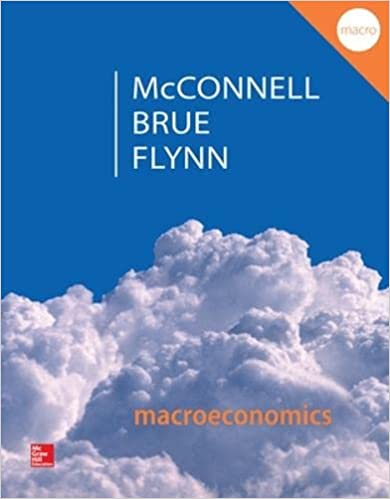
Macroeconomics 20th Edition by Campbell McConnell ,Stanley Brue ,Sean Flynn
Edition 20ISBN: 978-0077660772
Macroeconomics 20th Edition by Campbell McConnell ,Stanley Brue ,Sean Flynn
Edition 20ISBN: 978-0077660772 Exercise 7
A successful restrictive monetary policy is evidenced by a shift in the money supply curve from:
A) to a point halfway between
to a point halfway between  and
and  , a decrease in investment from $25 billion to $22.5 billion, and a decline in aggregate demand from AD 3 to AD 4.
, a decrease in investment from $25 billion to $22.5 billion, and a decline in aggregate demand from AD 3 to AD 4.
B) to
to  , an increase in investment from $20 billion to $25 billion, and an increase in real GDP from Q 1 to Q f.
, an increase in investment from $20 billion to $25 billion, and an increase in real GDP from Q 1 to Q f.
C) to
to  , a decrease in investment from $25 billion to $20 billion, and a decline in the price level from P 3 to P 2.
, a decrease in investment from $25 billion to $20 billion, and a decline in the price level from P 3 to P 2.
D) to
to  , a decrease in investment from $25 billion to $20 billion, and an increase in aggregate demand from AD 2 to AD 3.
, a decrease in investment from $25 billion to $20 billion, and an increase in aggregate demand from AD 2 to AD 3.
A)
 to a point halfway between
to a point halfway between  and
and  , a decrease in investment from $25 billion to $22.5 billion, and a decline in aggregate demand from AD 3 to AD 4.
, a decrease in investment from $25 billion to $22.5 billion, and a decline in aggregate demand from AD 3 to AD 4.B)
 to
to  , an increase in investment from $20 billion to $25 billion, and an increase in real GDP from Q 1 to Q f.
, an increase in investment from $20 billion to $25 billion, and an increase in real GDP from Q 1 to Q f.C)
 to
to  , a decrease in investment from $25 billion to $20 billion, and a decline in the price level from P 3 to P 2.
, a decrease in investment from $25 billion to $20 billion, and a decline in the price level from P 3 to P 2.D)
 to
to  , a decrease in investment from $25 billion to $20 billion, and an increase in aggregate demand from AD 2 to AD 3.
, a decrease in investment from $25 billion to $20 billion, and an increase in aggregate demand from AD 2 to AD 3.Explanation
Hence, the correct answer is a. , to a ...
Macroeconomics 20th Edition by Campbell McConnell ,Stanley Brue ,Sean Flynn
Why don’t you like this exercise?
Other Minimum 8 character and maximum 255 character
Character 255


